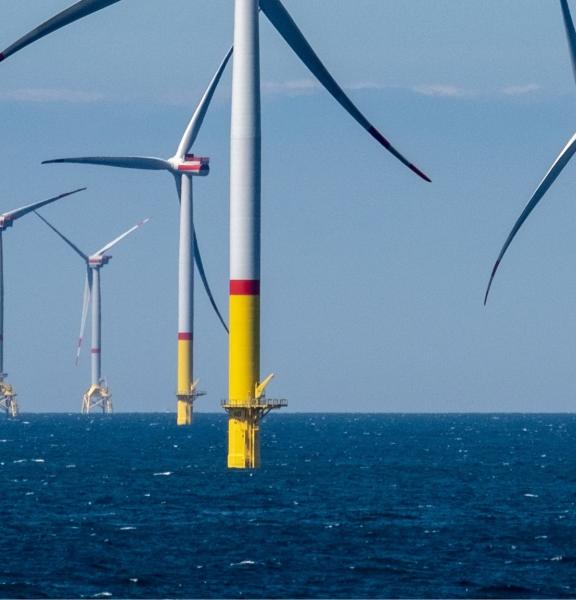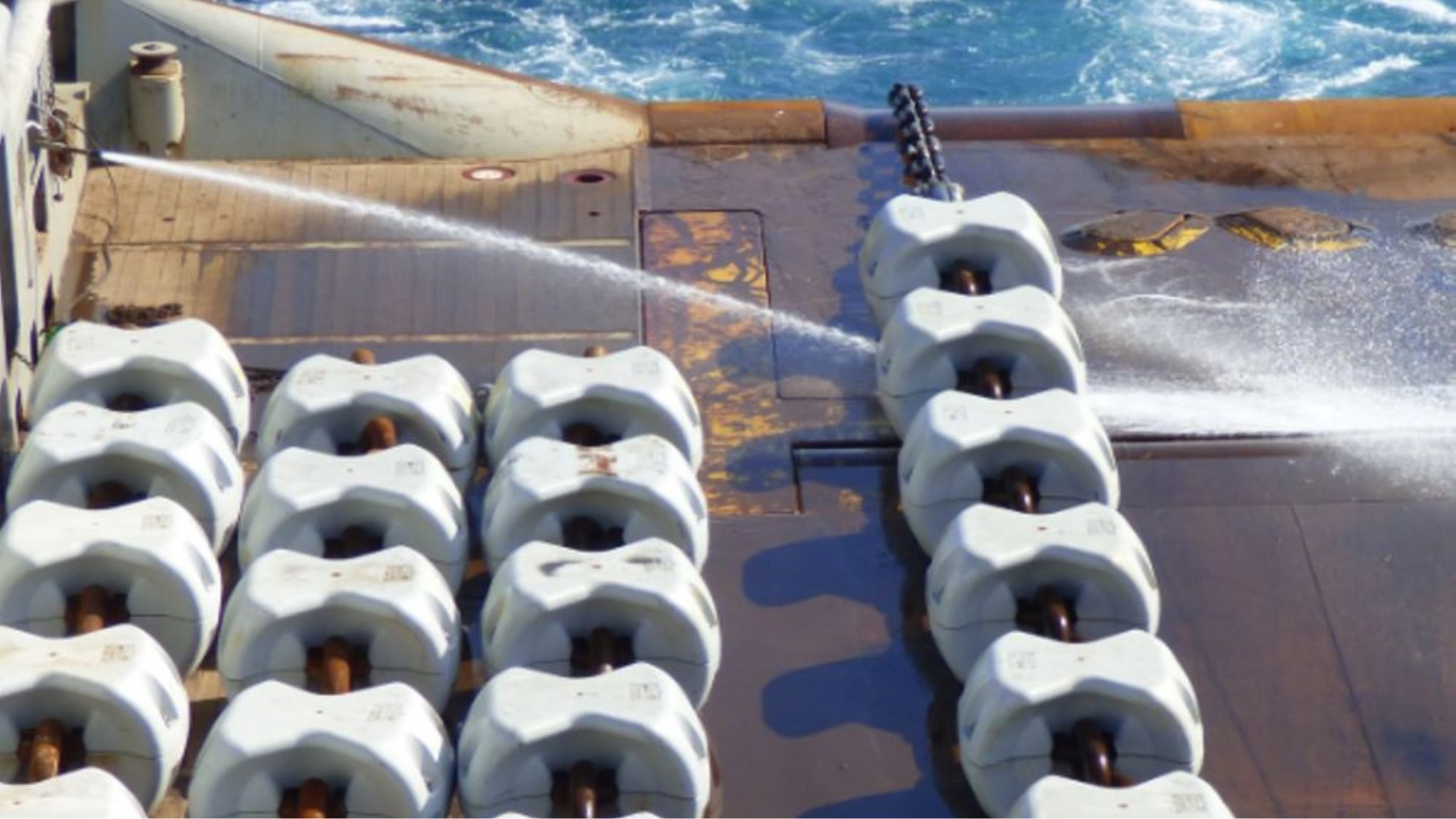
The mooring systems play a pivotal role in ensuring the stability of the Offshore floating wind substructure's and improving the global performance of the system.
It became even more critical in challenging environments and adverse weather conditions, necessitating a high level of reliability while also ensuring cost efficiency and easy installation and maintenance. Over the last years, projects have opted for catenary or semi-taut systems, versatile and efficient designs.
A key consideration in these installations is the need for a compact mooring system with a minimal footprint, given the deployment of numerous floaters and turbines across the offshore wind site.
Addressing this, the clump weights provided by FMGC are a practical solution recognized by technology providers and project developers.
These Clump weights not only ensure restoring forces but also serve to shorten the mooring lines, thereby reducing the global footprint on the seabed as well as the capital expenditures.
Designed with strong standards and benefiting from the Offshore return of experiences FMGC clump weights are adapted to project requirements, mooring design, and dynamics, making them a tailored solution withstanding the entire project's design life. They are dimensioned to meet specific project needs, emphasizing adaptability to different environments, technologies and concepts. Importantly, they are fully recoverable at the decommissioning stage, aligning with sustainable practices in the evolving landscape of offshore wind energy. The integration of such robust mooring systems underscores the commitment to both operational efficiency and environmental responsibility in floating offshore wind.
Companies specifications expand_more
FMGC
The history of the FMGC goes back to 1929 and if it continues today, it is because the company has never stopped developing to be attentive to its customers.
Design Engineering & Certification expand_more
Reliability is the cornerstone of FMGC's approach. Through extensive track records, return of experiences and dedicated analysis, we've developed a dedicated method to validate and certify clump weights in accordance with industry standards & practices.
Structural and mechanical assessment involves rigorous numerical modeling and scale tests, in accordance with mooring architecture and design life.
Our comprehensive approach extends across the system's entire lifecycle, from commissioning and through the entire design life.
Committed to the highest quality assurances & standards, FMGC clump weights undergo rigorous certification process, from design approval to delivery and commissioning.
Over years, significant investments have been made in enhancing and developing our clump weight systems. Expressed through extensive studies, analyses, and tests it aims to dive deeply into understanding the behaviors of clump weights and their interactions with other mooring components, reinforcing their reliability throughout the most demanding location and design life
Tailored Design for Extra Precision: expand_more
Because every project is different and in order to bring the most accurate and efficient solution to the customer, FMGC dedicated teams support the developers and project owners through the dimensioning, engineering, manufacturing and deployment phases of the clump weights.
FMGC supplies the MRE sector with both distributed and mutualised clump weights, considering the mooring design specificities, such as the requested linear masses, the chain link specifications, the targeted mooring dynamic and design.
While the mutualised configuration, mainly deployed on the upper part of the mooring lines, limit excessive line tensions, the distributed configurations, positioned on the touch down point, contribute to the control of the excursion zone by applying restoring forces.
Bespoke Design expand_more
When it comes to integrate clump weights on a mooring system, an optimal repartition and sizing is key to ensure a proper dynamic and reliability.
Leveraging extensive experiences in clump weight dimensioning, coupled to a strong track record over the last 10 years, FMGC offers guidance to developers and technology providers.
Considering each mooring architecture, floating substructure dynamics, and offshore site conditions, we advise on suitable dimensioning and distribution.
Moreover, FMGC expertise extends to assistance and guidance on assembly, loadout, and installation operations, providing insights to improve lead times and reduce mobilization expenses.
The comprehensive approach, integrating CW dimensioning insights with on-site considerations, is recognize as a great approach in enhancing the efficiency and dependability of mooring systems while also ensuring project certification and cost efficiency.
Track Record expand_more
- Floatgen (BW Ideol & Central Nantes)
- Kincardine 1 & 2 (Principle Power & Cobra)
- Windfloat Atlantic (Principle Power & Engie)
- Tetraspar (Stiesdal, RWE, Shell)
- EFGL (Principle Power, Ocean Wind & Eiffage)
- Eolink demonstrator
- EOLMED (BW Ideol, Total & Qair)
- FPSO Project (Chevron)


